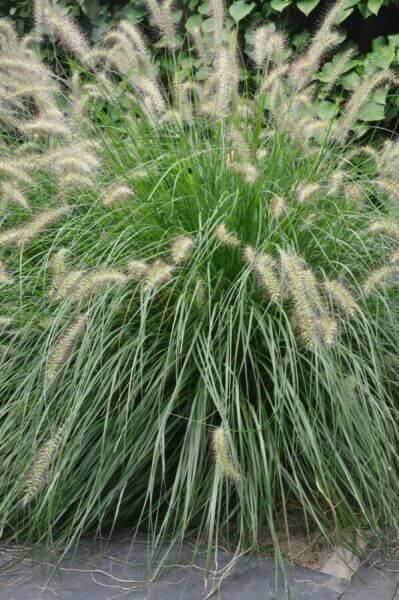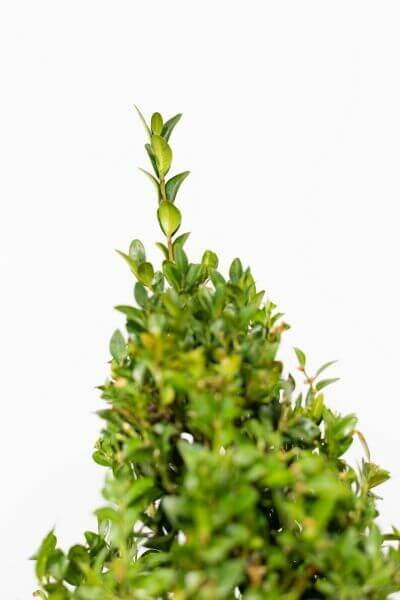Hedging Plants For Tropical Gardens
Hedging Plants For Tropical Gardens
Blog Article
Hedging Plants For Attractive Borders
Enhance your garden's appeal with rich hedge varieties such as Yew (Taxus), Thuja, Laurel, Photinia, and Bamboo, commemorated for their structural integrity and ecological benefits.
Yew and Thuja supply evergreen coverage and winter season durability, while Laurel uses rapid development and broad, fragrant leaves.
Photinia includes seasonal appeal with its lively red foliage, and Bamboo lends a low-maintenance, peaceful atmosphere.
These hedges improve air quality, minimize noise, and develop tranquil, private areas.
Correct planting, spacing, and maintenance guarantee vigorous development and ecological harmony.
Check out how these lavish varieties can elevate your garden's charm and wellness.
Key Takeaways
Transform Your Garden With Lush Hedge Varieties
- Select Yew for its thick, evergreen development and unparalleled longevity.
- Select Laurel for its quick development and broad leaves, ensuring quick privacy.
- Select Photinia for its dynamic seasonal foliage, which turns a striking dark red.
- Make use of Bamboo for a low-maintenance, winter-hardy hedge with visual appeal.
- Area plants 2-3 per meter and prune regularly for optimal development and health.
Popular Hedge Plants
When transforming a garden with rich hedge ranges, it's essential to think about popular hedge plants such as Yew, Thuja, Laurel, and Photinia due to their unique characteristics and benefits.
Yew (Taxus) is highly esteemed for its longevity and thick, green development, making it a prime choice for sustaining landscapes.
Thuja is kept in mind for its evergreen foliage and robust winter season resilience.
Photinia adds seasonal vibrancy with red leaves that darken in time, creating dynamic visual appeal.
Laurel offers quick development and aromatic, broad leaves, suitable for quick privacy.
Additionally, Bamboo is an excellent option for atmosphere, providing a low-maintenance, winter-hardy alternative that boosts the garden's aesthetic with its stylish, swaying canes.
These selections deal with a variety of horticultural needs and choices.
Benefits of Garden Hedges
Garden hedges offer a plethora of advantages, making them a valuable addition to any landscape. These natural barriers are cost-effective to carry out and offer significant wind defense, improving air flow and adding to sound reduction. The thick foliage of hedges like Thuja and Beech ensures personal privacy by obstructing presence, producing a secluded and tranquil environment.
Hedges also play an essential role in microclimate policy, offering a stable environment that promotes plant development and reduces temperature level changes. Their detailed leaf structures filter pollutants, enhancing air quality and contributing to a healthier garden environment.
Moreover, hedges master sound reduction, taking in and deflecting sound waves to lower ambient noise levels. This dual performance of supplying both visual and acoustic personal privacy boosts the overall tranquility and aesthetic appeal of any garden.
Planting and Maintenance Tips
For a successful hedge, precise preparation of the planting location is crucial. Ensure the soil has appropriate pH and drainage to support strong root advancement.
Area the plants properly for the chosen species. Water the hedge often during its initial growth phase, adjusting as needed with seasonal modifications.
Execute a systematic pest control and disease prevention technique, using organic or chemical treatments when essential. Regularly inspect for aphids, termites, and fungal infections.
Apply mulch to keep wetness and reduce weeds. Seasonal pruning promotes dense growth and air circulation, important for plant health.
Following these guidelines will assist you cultivate a lively, well-maintained hedge that boosts the appeal of your garden.
Spacing and Cutting Standards
Spacing and Cutting Standards
Appropriate spacing and trimming are crucial for cultivating healthy, aesthetically appealing hedges. Appropriate spacing guarantees each plant receives enough nutrients, light, and airflow.
Follow these guidelines for optimum hedge upkeep:
- Spacing: Position hedge plants 2-3 plants per meter to encourage robust development.
- Pruning Strategies: Regular pruning is essential for keeping preferred hedge height and shape. Trim brand-new growth in summer and cut down older wood during winter season.
- Seasonal Care: Adjust trimming approaches and schedules according to seasonal requirements to guarantee plant health.
- Hedge Height: Regularly display and trim to keep the desired hedge height and achieve consistent aesthetic appeals.
Abiding by these steps will guarantee your hedge thrives, improving both the appeal and functionality of your garden.
Selecting the Right Hedge
Picking the Right Hedge
Picking the suitable hedge includes evaluating elements such as fully grown height, foliage density, and environmental durability. Effective hedge plant choice requires comprehending each species' development attributes and site-specific adaptability.
For instance, Yew (Taxus) uses excellent more info longevity and dense development, while Thuja is notable for its winter resilience. Furthermore, thinking about upkeep requirements is crucial; fast-growing species like Laurel or Privet need routine cutting, whereas low-maintenance alternatives like Bamboo or Ivy may be preferable for those seeking minimal upkeep.
Environmental elements such as soil type, light accessibility, and wetness conditions should also guide the selection process. This careful approach ensures the picked hedges will thrive, providing both visual and practical benefits to the garden landscape.
Delivery and Planting Advice
To ensure your hedge plants grow, they need to be provided by specialized carriers and planted promptly upon arrival.
Follow these essential actions for effective planting:
- Soil Preparation: Enhance the soil with organic matter to improve drain and nutrient material.
- Planting Depth: Produce a trench twice the width and equivalent to the depth of the root ball.
- Watering Methods: Water thoroughly after planting, keeping the soil regularly wet but not saturated.
- Mulching: Use a layer of mulch to keep wetness and suppress weeds.
Customer Support and Service
Offered the essential role of prompt assistance in horticultural pursuits, our consumer support team is readily available six days a week through telephone, e-mail, and social networks to offer professional guidance and promptly attend to any concerns. Their commitment to quick reaction times ensures client satisfaction by solving queries related to plant health, optimum planting methods, and upkeep schedules.

Interaction Technique
-------------------
Within 24 hours
Within 48 hours
This extensive support group, enhanced by an outstanding 9.3/ 10 customer ranking, highlights our commitment to boosting the gardening experience for each client.
Regularly Asked Questions
The Length Of Time Does It Take for Hedge Plants to Develop?
Hedge plants normally require one to 3 years to become completely developed, with the precise period varying by types and growing conditions.
Effective care throughout this critical period is necessary for robust growth. Constant watering, alert weed control, and suitable fertilizer application are essential in promoting strong root development.
For instance, fast-growing types like Laurel may develop quicker, while slower-growing varieties such as Yew might take longer. Thorough upkeep accelerates the establishment procedure, leading to healthy and dense hedges.
What Are the Finest Hedge Plants for Privacy?
The question of the best hedge plants for personal privacy includes evaluating evergreen and deciduous options.
Evergreen hedges like Thuja, Laurel, and Cypress offer year-round protection, making sure constant privacy.
In contrast, deciduous hedges such as Beech provide seasonal personal privacy, shedding leaves in colder months.
Secret upkeep tips for personal privacy hedges consist of regular trimming, fertilizing in spring, and appropriate spacing-- typically 2 to 3 plants per meter.
In addition, constant watering and diligent weed elimination are important for promoting healthy, dense development.
Can Hedge Plants Attract Wildlife to My Garden?
Yes, hedge plants can bring in wildlife to your garden by offering important benefits like shelter, food, and nesting websites, thus enhancing regional biodiversity. Yew, holly, and laurel are outstanding for bring in birds, while ivy supports a variety of pests.
However, it is necessary to note that there are some drawbacks, such as increased upkeep to manage insects and regular upkeep. Thoroughly selecting and preserving hedge ranges can help stabilize these benefits and disadvantages, eventually cultivating a dynamic and sustainable ecosystem in your garden.
Are There Any Blooming Hedge Plants Available?
Yes, there are flowering hedge plants available that can improve the appeal of your garden.
For example, Elaeagnus, also called Olive Willow, produces aromatic white flowers in the fall, adding a touch of sophistication.
Photinia, another popular choice, showcases dynamic red leaves that mature into an abundant green, developing a vibrant visual effect throughout the seasons.
To ensure these plants prosper, it's important to practice proper pruning techniques and seasonal upkeep, such as cutting brand-new growth in the summer and cutting back in the winter.
These steps will assist keep the health and visual appeal of your flowering hedges.
How Do I Avoid Bugs in My Hedge Plants?
To avoid bugs in hedge plants, use natural bug control approaches and keep proper hedge care. Introduce beneficial insects like ladybugs, which take advantage of hazardous insects, to produce a balanced ecosystem.
Regularly inspect your hedges for signs of invasion and promptly remove any afflicted parts to avoid the spread. Make sure the health of your hedges by using balanced fertilizers and providing sufficient water.
Utilize mulching to maintain soil wetness and appropriate spacing to decrease plant stress and promote robust growth. These practices jointly assist in lessening insect issues and keeping a healthy hedge.
Conclusion
In essence, picking the best hedge varieties such as Yew, Thuja, and Laurel can transform any garden into a serene sanctuary. These plants offer year-round greenery, improve aesthetic appeal, and deal practical benefits like sound reduction and wind protection.
Correct planting methods, accurate spacing, constant watering, and seasonal trimming are vital for ideal growth.
Trustworthy delivery services and expert consumer support make sure a smooth experience from purchase to planting, making it simpler than ever to raise your outdoor area.
Garden hedges offer a multitude of advantages, making them a valuable addition to any landscape. These natural barriers are cost-efficient to implement and provide substantial wind security, enhancing air blood circulation and contributing to noise decrease. The dense foliage of hedges like Thuja and Beech guarantees personal privacy by obstructing presence, creating a remote and tranquil environment.

Pruning Methods: Regular pruning is essential for keeping wanted hedge height and shape. Trim brand-new development in summertime and cut back older wood throughout winter season.
Report this page